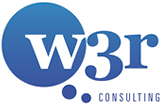How to Overcome the Healthcare Talent Gap and Fill Your Open Jobs

Hiring healthcare IT professionals has always been a tough undertaking, and our full employment economy has not alleviated that struggle. In July, the number of open jobs surpassed the number of unemployed people for the first time since the Bureau of Labor Statistics tracked these stats in 2000 – a situation that further impaired the search for STEM professionals. Worse still, market analysts doubt a reversal of fortunes anytime soon. In fact, IDC predicts that 30% of the global demand for emerging technologies will go unfulfilled through 2022 due to talent pool deficiencies. How will you win against the widening healthcare IT talent gap? Healthcare organizations that utilize the following talent acquisition strategies will fare better than their competition.
1.) Effectively Appeal to Passive Candidates
Low unemployment has turned a decent sized talent pool into a puddle. Conditions are so bad that according to the 2018 HIMSS U.S. Leadership and Workforce Survey, 51% of hospitals and 38% of healthcare vendors were negatively impacted by their workforce challenges. Though most highly skilled members of the workforce are currently employed, recruiting passive candidates can help overcome workforce shortages.
What compels tech professionals to leave their current opportunities? These are some of the more common motivators:
- Higher compensation – 61% of all tech workers feel that they are underpaid, especially since IT compensation growth has flattened in recent years. Healthcare organizations that can beat the average raise in IT salaries can win top talent away from their current roles.
- Working remotely – Dice surveys show that 60% of tech pros prefer to work remotely half of the time, but only 22% currently can. Though specific work-from-home and cybersecurity policies need to be agreed upon first, day-to-day IT tasks can be conducted via the cloud.
- Increased technology – Passive candidates need to be wowed if they are going to consider an offer. Successful companies do so by advertising the leading edge opportunities they can provide. For example, 49% of healthcare companies are already undertaking blockchain initiatives. Advertising your opportunities to work with blockchain or other cutting edge technology improves your chances of coaxing top talent away from less advanced competitors.
2.) Hire for Culture; Train for Skills
In the healthcare industry, subject matter expertise and specialization can feel like an inflexible criteria. You wouldn’t hire someone to be a neurosurgeon without a Doctorate of Medicine, residency experience, state licensing, and board certification. Though you may require HIPAA experience or some EHR platform familiarity, healthcare organizations can be more flexible with the job requirement criteria for IT professionals.
In the HIMSS Innovation That Sticks podcast episode “Innovation Driving Workforce Development,” a proposed solution was to bring in exceptional technical talent from other high-demand industries – specifically from the financial or aeronautics sectors. Though these candidates may lack industry experience, they are accustomed to quickly adapting to and solving complex problems with sophisticated IT tools. All they need to do is align with your culture.
On the opposite end, some companies are looking to take professionals with rich healthcare but limited technical experience and promote them up the ladder. In this case, they can evaluate them based on their work ethic, culture fit, and an understanding of healthcare regulations and patient confidentiality, then train them in the technical aspect of the job once they’re hired. This approach can be utilized for EHR specialists) or some data analyst positions (because data platforms are increasingly user friendly).
3.) Use Data to Drive Hiring
If your organization is fortunate enough to find top technical talent, are you prepared to avoid a bad hire? A growing number of businesses are turning to their own data to avoid that minefield. Though healthcare organizations are stellar at gathering data and are increasingly good at using that data to improve care outcomes, there is room for improvement with data driven recruiting practices.
Google is an exceptional model for this approach. By measuring data about potential candidates against internal hiring rubrics, they believe they can eliminate some of the biases inherent in human decision making. They look at the traditional hiring metrics (cost per hire, time to hire, source of hire, etc.), but they also reverse engineer their hiring rubric from the past performance of top employees, determining which skills, qualities, and experience actually elicit a real-world ROI.
Though the exact metrics your business might use will vary depending on your priorities, the core of these statistics will help to narrow down which candidates are statistically aligned with your business and even which hiring strategies are best for overcoming the healthcare IT talent gap.
Want to identify other ways to overcome the healthcare IT talent gap? Contact our recruiters to learn about the leading edge strategies capable of funneling top talent into your organization.
Related Articles
3 Hiring Strategies that Bring You Top Healthcare IT Consultants
Recruiting Passive Candidates during an IT Talent Shortage
3 Reasons Companies Are Having a Harder Time Recruiting Tech Talent

